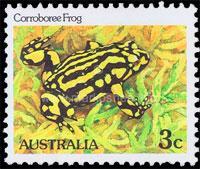De neonicotinoiden veroorzaken met de uitroeiing van de geleedpotigen een breuk in de voedselketen en vernietigen de 'web of life'
In minder dan 20 jaar zijn de neonicotinoiden wereldwijd uitgegroeid tot de meest gebruikte insecticiden met een marktaandeel van meer dan 25%. Dat deze stoffen ook de meest gevaarlijke insecticiden zijn die ooit op de markt zijn gekomen, begint velen zo langzamerhand te dagen. Neonicotinoiden verontreinigen het milieu overal daar waar ze gebruikt worden, zoals bijvoorbeeld is aangetoond in het Westen van Nederland, op de Southern High Plains van Texas, in de Central Valley van Californië, en op de uitgestrekte Canadese prairies. De stoffen worden maar langzaam afgebroken, en hebben halfwaardetijden die op sommige bodems kunnen oplopen tot bijna 20 jaar, en ze zijn bovendien uitzonderlijk giftig voor geleedpotige dieren, vooral op langere termijn. Zo is een scenario voor een milieu catastrofe ontstaan zoals de Amerikaanse biologe Rachel Carson heeft beschreven in haar boek Silent Spring ('dode lente'). Sinds 2009 verzamelt de toxicoloog Henk Tennekes op deze website gegevens over geleedpotigen (bijen, hommels, vlinders, en vele andere soorten) en dieren die van geleedpotigen afhankelijk zijn (vogels, vissen, amfibieën, reptielen en zoogdieren). Na vijf jaar verzamelen van gegevens maakt de website het overduidelijk dat het bar slecht gaat met deze soorten en ze met uitsterven worden bedreigd. Als niet op korte termijn wordt ingegrepen met een verbod op alle toepassingen van de neonicotinoiden, zal een ineenstorting van het ecosysteem onvermijdelijk worden, waardoor vrijwel alle levensvormen met uitsterven worden bedreigd.










